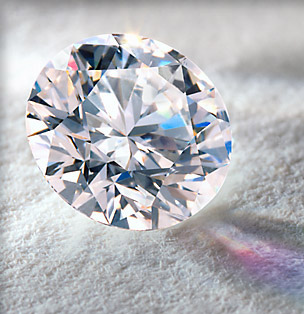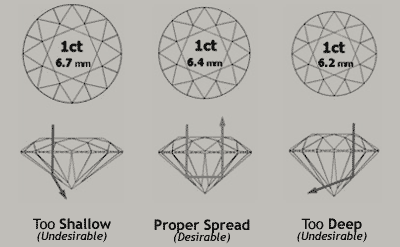All my barbies were bald...

Wednesday, November 24, 2010
Meet Eleanor..
Finished today, fresh from the workshop! Beautiful four claw platinum solitaire.....3.06ct ESI1 IGI Cert
Stock No 7453
Thursday, October 28, 2010
Something for the halloween wkend!!
The 2010 Dublin International Tattoo Convention will take place Halloween Weekend in the D4 Hotel Ballsbridge. Tickets are available on the door. Weekend Passes are €25 and are available on Friday ONLY! Daily passes are €15 per day! Fancy Dress on sunday.....
Friday, October 22, 2010
Break out your best china!
Shebeen Chic Vintage Tea Party and Market
Looking forward to this one...Suprising stalls, sexual cupcakes, knee trembling music,yum yum!scrummy vintage cocktails served in tea cups at vintage tea party and market.........all this from 12-6pm in Shebeen Chic on 23rd October....
Superb day, tea was brewed, cupcakes were scoffed..Felt like taking a step back in time, vintage market was amazing, full of trinkets,vintage jewellery and obscure antique memorabilia..of which each had its own story to tell....indulged myself, picked up a vintage fur coat and pinochio braces(yup ye heard me) for a steal..
Demfools http://www.myspace.com/demfools provided haunting distingive sounds...that created this weirdly wonderful oddity...
Looking forward to this one...Suprising stalls, sexual cupcakes, knee trembling music,yum yum!scrummy vintage cocktails served in tea cups at vintage tea party and market.........all this from 12-6pm in Shebeen Chic on 23rd October....
Superb day, tea was brewed, cupcakes were scoffed..Felt like taking a step back in time, vintage market was amazing, full of trinkets,vintage jewellery and obscure antique memorabilia..of which each had its own story to tell....indulged myself, picked up a vintage fur coat and pinochio braces(yup ye heard me) for a steal..
Demfools http://www.myspace.com/demfools provided haunting distingive sounds...that created this weirdly wonderful oddity...
The Diamond 4C's Colour and Clarity Grading

  |

grading report from the ags or gia
Color and the influence of CUT
The shape of a diamond influences the amount of color people may see in it. A round brilliant is the most efficient shape for returning light and will show less apparent color than a mixed cut like a princess, or a step cut like an emerald or asscher. But most important is how well the diamond was cut.Diamonds are graded in the face-down position and viewed for color from the side. This is because great light return in a diamond can ‘mask’ color, especially in round brilliants. Extremely well-cut diamonds may appear more colorless in the face-up position than the grade they received at the lab due to superior light return. For instance, a diamond that was graded H in the side position can ‘face-up’ like a G or an F, but only if it was cut extremely well.
Whiteflash first sold only diamonds in the D-I range, but our commitment to cut quality resulted in the majority of our near-colorless diamonds to face up several grades better. As a result we are now selling colors as low as K, to the delight of many consumers.
Color and Sensitivity
Some people are more color-sensitive than others. One person may see color in a diamond that appears to have no color to someone else. Even if you have great sensitivity to color you may have different preferences than others. The icy whiteness of a D may appeal to one person, while the warmer look of a J appeals to another. A third person may not see any difference between the two.Color and Settings
Remember that diamonds absorb the color of their surroundings, so it’s best to judge them against a white background. Once mounted a diamond will show less color than it did loose. Remember that the choice of setting may influence your diamond’s color. If you choose a gold setting and have a colorless diamond that diamond may absorb and reflect back some of the setting color. There are many different combinations and no single one is for everyone. Ultimately the choices are determined by personal preference and sensitivity.Color can’t be judged in photos or on monitors.
- Consider which lab assigned the grade.
- Wear a white, gray or black top when shopping.
- Judge color against a white background.
- View the diamond unmounted.
- View the diamond from the side looking for tint.
- Compare side versus face up appearance.
- With “very strong” fluorescence look for an oily or milky appearance.
- Consider your diamond’s color when choosing your setting.
- See the diamond in the proposed mounting before purchase.
Clarity Grading

VVS1 and VVS2 stand for Very Very Slight inclusions. This means the professional found it very difficult to see minute inclusions under magnification. There is practically no chance an observer will see such inclusions with the naked eye.
VS1 and VS2 stand for Very Slight inclusions. VS1 is difficult for a professional to see with 10 power magnification. VS2 is easier to see, still under magnification. It is very unlikely that an observer will see VS inclusions with the naked eye.
SI1 and SI2 stand for Slightly Included. This means a professional easily saw inclusions with 10 power magnification, but may or may not be able to see them with the naked eye. Whether or not a diamond is “eye-clean” to an observer will be discussed in a moment.
I1, I2 and I3 stand for Included. These inclusions are easily seen with magnification and are also visible to the naked eye.
Clarity and Grading Standards
As with color, you should always consider where the diamond was graded. Grading is subjective and some laboratories give easier grades than others. In the United States the GIA and AGS are widely considered the strongest laboratories.
Clarity Summary
Clarity is quite simple. If you don’t want inclusions, a grade like VS or VVS will practically guarantee that you will never see one. If you want to find an eye-clean SI1 or SI2 diamond you will need to work with an expert you can trust to find one that meets your expectations.Carat
Carat Weight
The weight of a diamond is expressed in carats. This term comes from ancient times when gems were weighed against the carob bean. One carat is equal to 200 milligrams, or one fifth of a gram.Carat weight is sometimes expressed in points. One point equals 1/100th of a carat, so 25 points is equal to a quarter of carat and 50 points is equal to half of a carat. Grains of rice were also used. 4 grains of rice were equal to a carob bean. That’s why people sometimes call a quarter carat diamond a one grainer.

Carat Weight and CUT:
Carat weight is not the same thing as size. As diamonds increase in weight their apparent size becomes less predictable. Diamonds cut too shallow may appear larger than they should, while diamonds cut too deep may look smaller. Too shallow and too deep are both undesirable. In this example bigger is not better.proper spread

diameter guide for rounds

Apparent Size
Diamonds...Here comes the science bit..
The 4C's of Diamonds
- The cut of a diamond refers to its proportions. It is one of the most important factors to be considered while choosing your diamond. It is an aspect which is directly influenced by man. The other three are influenced totally by nature.
- The cut of a diamond should not be confused with its shape. Shapes are cut from the original rough diamond, and whatever the shape, a well-cut diamond is always better able to reflect light.
- Diamonds are usually cut with 58 facets, or separate flat surfaces. These facets are placed at precise angles to each other. This relationship is designed to maximize the amount of light reflected through the diamond and to increase its beauty.
- Rough stones can be cut to their maximum weight and monetary value but loses some "brilliance and "sparkle". Similarly rough stones can also be cut into the most beautiful stone, despite heavy weight loss and lowered monetary value.
Dublin Zombie Walk 2010
Look dead...the zombies are coming...
Who are those people with blood on their face staggering down a Dublin street?
It’s not a regular saturday night drunken mob, it’s participants in the Dublin Zombie Walk 2010... Went all out with the costumes,pigs blood, brains and the whole thing was for a good cause. What a day it was...just so happened that the Dublin Zombie Walk was also held on the same day as Pride..no surprises there was a head on collision between zombies and trannies in Dublin fair shitty...Heads certainly did roll...what ever happened to Zombie Pride...
The event was held to raise money for the Irish Cancer society.
Thanks to all the Volunteers who helped out on the day...and of course the make up artiste...Leonie Dennison(Im looking at you)...for making the undead...well...dead...
Who are those people with blood on their face staggering down a Dublin street?
It’s not a regular saturday night drunken mob, it’s participants in the Dublin Zombie Walk 2010... Went all out with the costumes,pigs blood, brains and the whole thing was for a good cause. What a day it was...just so happened that the Dublin Zombie Walk was also held on the same day as Pride..no surprises there was a head on collision between zombies and trannies in Dublin fair shitty...Heads certainly did roll...what ever happened to Zombie Pride...
The event was held to raise money for the Irish Cancer society.
Thanks to all the Volunteers who helped out on the day...and of course the make up artiste...Leonie Dennison(Im looking at you)...for making the undead...well...dead...
Subscribe to:
Comments (Atom)











